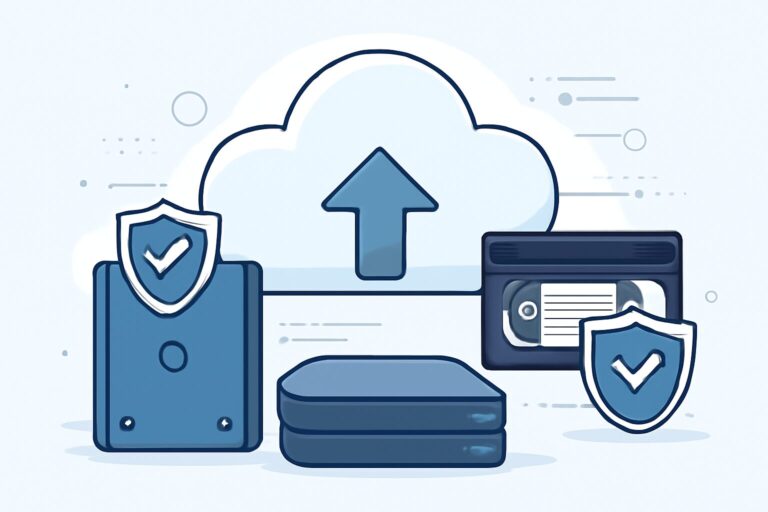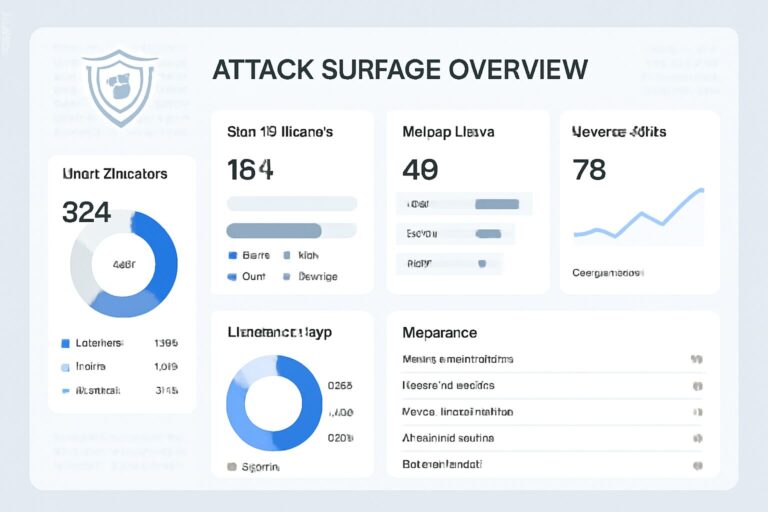# Urgent Insight: Top 5 AI Cybersecurity Threats and Defense Upgrade Strategies
This article comprehensively reveals AI cybersecurity threats, from the latest trends in adversarial attacks and model poisoning to practical defense strategies including data cleaning, model monitoring, and adversarial training. Master the key points for upgrading AI security defenses in one read.
## AI Cybersecurity Threats: Beware of the Invisible “Silent Killers” 🛡️
In the fast-evolving field of artificial intelligence, **AI cybersecurity threats** are stealthily eroding the entire industry ecosystem at unprecedented speed and subtlety. Traditional security models can no longer fully cope with these “silent killers.” These new threats not only trouble enterprise technical teams but also force the whole industry to rethink defense strategies. We must recognize: AI models and data security are closely linked, and any vulnerability can be exploited, causing irreparable damage. For example, adversarial attacks use small but deliberately designed perturbations to easily penetrate model defenses and trigger erroneous decisions; model poisoning is a long-term covert sabotage that fundamentally distorts our AI cognition.
The underlying problem is that traditional signature-based security detection methods have long failed—they cannot track and recognize these fast-evolving, highly customized AI attack patterns. Now, AI cybersecurity threats have become more complex, and enterprises must rely on real-time monitoring and dynamic defense strategies to respond calmly. Through specific cases and data, we witness an increasing number of core algorithms being attacked, affecting commercial value and user trust. For instance, in 2023, a major financial institution suffered huge economic losses due to a model poisoning incident that caused risk assessment errors.
—
## Urgent Warning: Fatal Cracks in AI Network Defense
### How Adversarial Attacks Easily Penetrate Existing Security Barriers
In recent years, adversarial attacks have emerged as one of the most dangerous threats in AI. Simply put, these attacks subtly modify parts of input data that are almost imperceptible to the human eye, causing AI models to output wrong results. Whether it’s misjudgment in recognizing traffic signs by autonomous vehicles or failures in automatic speech recognition systems, the consequences can be severe.
Current security barriers mainly rely on preset rules and static detection, which cannot effectively identify these “carefully disguised” attacks. Attackers exploit gradient information to design “invisible” perturbations that bypass defenses. Worse, once these perturbations are embedded into a model, the defense cost multiplies and business impact escalates dramatically.
### Long-term Covert Damage of Model Poisoning to Core Algorithms
Compared to adversarial attacks, model poisoning is more dangerous because of its latency and stealth. Attackers inject malicious samples into training data, altering model behavior and causing bias or wrong judgments. Since such sabotage hides within massive data, traditional data cleaning often cannot detect it.
Poisoning affects the overall credibility and stability of models. Once deployed, it’s hard to discover and very difficult to fix later. For example, if a medical AI diagnosis system is poisoned, it may provide incorrect diagnoses in critical moments, risking lives and property.
—
## Dangerous Signals: The Failure of Legacy Signature-based Defense
### How Adversarial Attacks Break the Myth of Signature Detection
Traditional network security depends on signature-based detection technologies like malware library matching and feature code scanning. These methods were once very effective in preventing virus spread and blocking known attacks. However, facing AI cybersecurity threats, especially adversarial attacks, such tactics have become ineffective.
Adversarial sample designers deliberately evade known signatures and rapidly generate various “mutants,” so signature detection cannot keep up. Additionally, the dynamic and complex nature of attacks far exceeds traditional threats, making signature libraries frequently outdated. Signature-based defenses have become a “Van Gogh reflex” (unable to perceive constantly evolving enemy strategies), urgently requiring enterprise security architecture upgrades.
### Innovations in Real-time Threat Detection Under AI Cybersecurity Threats
Given the limitations of signature detection, the industry is shifting to behavior analysis and anomaly detection, leveraging AI-based security mechanisms. For example, monitoring intermediate representations during model inference to quickly identify abnormal patterns. Real-time threat detection that integrates multi-source data can dynamically capture attack characteristics.
Enterprises are gradually implementing end-to-end threat detection frameworks, combining log analysis, network traffic monitoring, and continuous audit of model performance metrics, effectively enhancing security response speed. This is also key to preventing cascading damage caused by attacks.
—
## Severe Challenge: Data Cleaning Cannot Defend Against Model Poisoning
### How Model Poisoning Circumvents Data Cleaning
Data cleaning is a common method to prevent dirty data from entering model training, but it is ineffective against carefully designed poisoning samples. Attackers deliberately hide malicious samples within “normal” datasets using vague labels and subtle patterns, making them difficult to detect with standard cleaning processes.
Real cases show that even strict cleaning algorithms have “false negatives,” allowing malicious data to remain and slowly impact model decisions. To combat this advanced threat, multi-stage, multi-dimensional data review mechanisms are needed. AI-assisted anomaly detection can significantly improve detection capability but cannot fully replace human judgment.
### Key Points of Efficient Cleaning Processes in AI Cybersecurity
To effectively stop model poisoning, cleaning processes must:
– Enforce multi-layer data verification and auditing
– Use intelligent anomaly sample detection assisted by human review
– Continuously update cleaning rules and model feedback
– Combine metadata and context analysis to identify abnormal samples
These measures jointly build an efficient, dynamic data cleaning system to provide a strong foundation for safe model training.
—
## Not to Be Ignored: Risks and Gaps in Model Monitoring
### Real-time Monitoring Needs Driven by AI Cybersecurity Threats
Post-deployment monitoring systems are equivalent to a “constant alarm.” Existing monitoring often focuses on performance metrics (accuracy, recall), ignoring hidden security risks and abnormal behaviors. Such single-dimensional monitoring cannot detect subtle impacts caused by adversarial attacks.
Real-time monitoring systems must not only track model outputs but also analyze input features and internal activation signals to uncover anomalies. Monitoring should integrate log audit and user behavior analysis for early warning. Incorporating AI security modules into Security Operation Centers (SOC) has become an industry trend.
### Principles for Automated Monitoring Design Driven by Adversarial Attacks
Automated monitoring systems should follow:
– Real-time responsiveness: millisecond-level response for rapid action
– Multi-dimensional data fusion: cross-validation to increase accuracy
– Adaptive learning: continuous algorithm adjustment to new threats
– Transparency and explainability: help security teams understand anomaly causes
Only with these can AI cybersecurity threats be effectively countered to ensure stable system operations.
—
## Urgent Upgrade: Comprehensive Defense with Adversarial Training
### Adversarial Training to Strengthen Defense Against Adversarial Attacks
Adversarial training is one of the most effective defenses today. By introducing adversarial samples during training, models learn to recognize and resist carefully designed perturbations. It improves model robustness and significantly reduces adversarial attack success rates.
However, adversarial training requires high computing resources and data quality and requires continuous optimization for different attack types. Enterprises should incorporate adversarial training into routine training workflows and regularly update and test models to handle evolving threats.
### Multi-level Adversarial Training Framework to Counter Model Poisoning
Defense strategies against model poisoning are more complex. Multi-level protection across data source supervision, model training, and evaluation stages includes:
– Strengthening data source security and verification
– Integrating adversarial training and defense mechanisms
– Enhancing model lifecycle monitoring and rollback mechanisms
This comprehensive approach ensures that even if initial poisoning occurs, the damage will not be amplified during later use, safeguarding AI systems long-term.
—
## FAQs
**What are the main aspects of AI cybersecurity threats?**
They mainly include adversarial attacks, model poisoning, data tampering, and privacy leaks.
**How does adversarial training improve model security?**
By adding adversarial samples during training, models learn to resist perturbations and reduce misclassification.
**Why can’t traditional signature detection effectively defend against AI attacks?**
Because AI attacks are diverse and constantly changing, and traditional signatures rely on known features, failing real-time adaptability.
**Why is model poisoning so hard to defend?**
Poisoned samples are hidden within normal data and impacts are covert, making routine cleaning ineffective.
**How to achieve real-time AI model threat monitoring?**
By fusing multi-source data, anomaly detection, combined with automated alerts and human analysis.
**What should enterprises prioritize facing AI security threats?**
Build dynamic security defenses combining adversarial training and real-time monitoring to secure models and data.
—
## Conclusion: Safeguarding the New Foundation of Artificial Intelligence with De-Line Information Technology
As AI deeply integrates into various industries, **AI cybersecurity threats** concern not only technology but also our future. Enterprises must keep pace with cutting-edge technology and upgrade defense systems. Adversarial attacks and model poisoning are rapidly evolving, while traditional defenses show weariness.
Only by scientifically cleaning data, rigorously monitoring models, and comprehensively applying adversarial training can we build a robust firewall. De-Line Information Technology upholds innovation alongside security, dedicated to offering leading AI security solutions to help enterprises fortify their defenses.
📢 Visit [De-Line Information Technology Official Website](https://www.de-line.net) to explore our professional services and begin your AI security upgrade journey!
—
> References:
> [Arxiv Paper — Adversarial Attacks and Defenses in AI](https://arxiv.org/abs/1810.00069)
> [NIST AI Security Guidelines](https://www.nist.gov/ai)
************
The above content is provided by our AI automation poster




